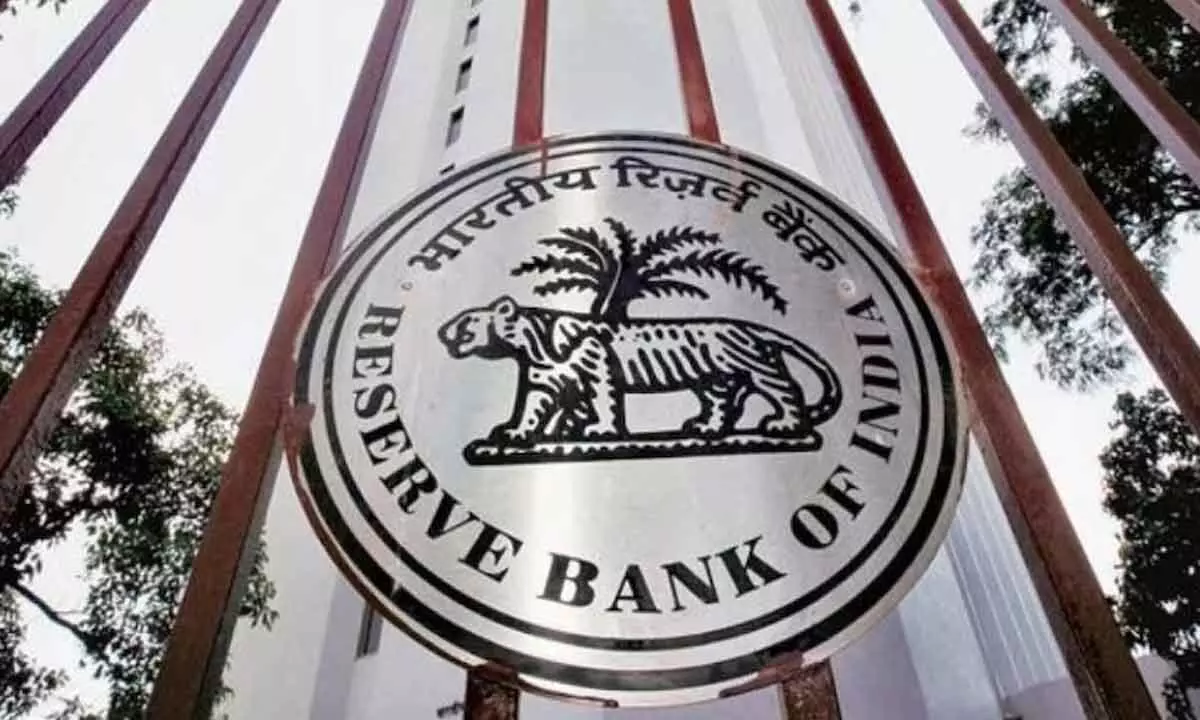Live
- Search intensified for Gowtham Reddy as HC dismisses his bail plea
- Santosh Trophy final round to begin in Hyderabad tomorrow
- BGT: Rohit must return to opening for Brisbane Test, says Ponting
- Swimming sensation Havya steals the show
- NDTL gets WADA nod to manage Athlete Biological Passport
- BWF World Tour Finals: Treesa-Gayatri wins 2nd match to keep semis hopes alive
- Youngest ever to conquer chess world
- Jamie Lever to star in Lakshmi R Iyer’s ‘2050’: It challenged me emotionally
- Prateeksha Srivastava says she seldom meets fellow music composers Rusha, Blizza, in person
- Bridal fitness tips by Yasmin Karachiwala
Just In
RBI expected to continue with stricter measures to curb extensive expansion of unsecured retail loans

Reserve Bank of India
The Reserve Bank of India (RBI) is expected to continue with stricter measures to make a dent in the unsecured consumer credit, analysts said.
New Delhi: The Reserve Bank of India (RBI) is expected to continue with stricter measures to make a dent in the unsecured consumer credit, analysts said.
The recent surge in consumer/retail loans is largely supported by the unprecedented demand of these loans by consumers to meet their consumption growth.
Notwithstanding the rise in banks’ interest rates on fresh rupee loans by 1.9pp to 9.4 per cent during the past 18 months (up to Sep’23), personal loans have continued to increase 25 per cent YoY during the period, Motilal Oswal Financial Services said in a report.
A combination of high loan growth and rising rates confirm extremely strong loan demand. The lenders have been more than happy to meet this demand of loans by the retail sector, because the corporate sector was just not interested in bank loans or they shifted to other modes of borrowings (bond market or external borrowings), the report said.
Not surprisingly then, the share of the non-financial corporate (NFC) sector was down to 28 per cent of the banks’ loan book in 1QFY24, from 44 per cent a decade ago in FY13. As a corollary, the share of the household sector has increased to 56 per cent from 45 per cent during the corresponding period.
Our estimates of household debt service ratio (DSR) in India suggest that it has increased to 12 per cent in recent years, up from 10 per cent in FY13, much higher than other major economies with 2-3x household debt, Motilal Oswal Financial Services said in the report.
It means that a typical Indian household uses 12% of his annual income to meet its debt obligations, compared to a median of 8 per cent by 18 other nations, for which data is available.
The fact that this share has increased indicates that a larger and larger share of income is being used to meet debt obligations every year.
"Combine the rising share of debt servicing with a strong consumption growth, and lower savings should not come as a surprise to anyone,” the report said.
Overall, the RBI announcements do nothing to hurt the demand for unsecured retail loans, which, we believe, is one of the major factors for the surge in such exposures.
“Unlike the popular narrative, we have not been very optimistic about the impending revival in corporate investments during the past few years, and we do not have any reason to change our expectations for at least the next 2-3 quarters,” the report said.
Further, while it is true that the unsecured loans are the riskier segment, it must be noted that the financial position of India’s household sector has worsened markedly during the past decade.
Household total savings are estimated to have November 28 fallen to 18 per cent of GDP in FY23, from 22.5 per cent a decade ago in FY13 while the net financial savings (NFS) of household sector were at 47-year low of 5.1 per cent of GDP last year, the report said.

© 2024 Hyderabad Media House Limited/The Hans India. All rights reserved. Powered by hocalwire.com






